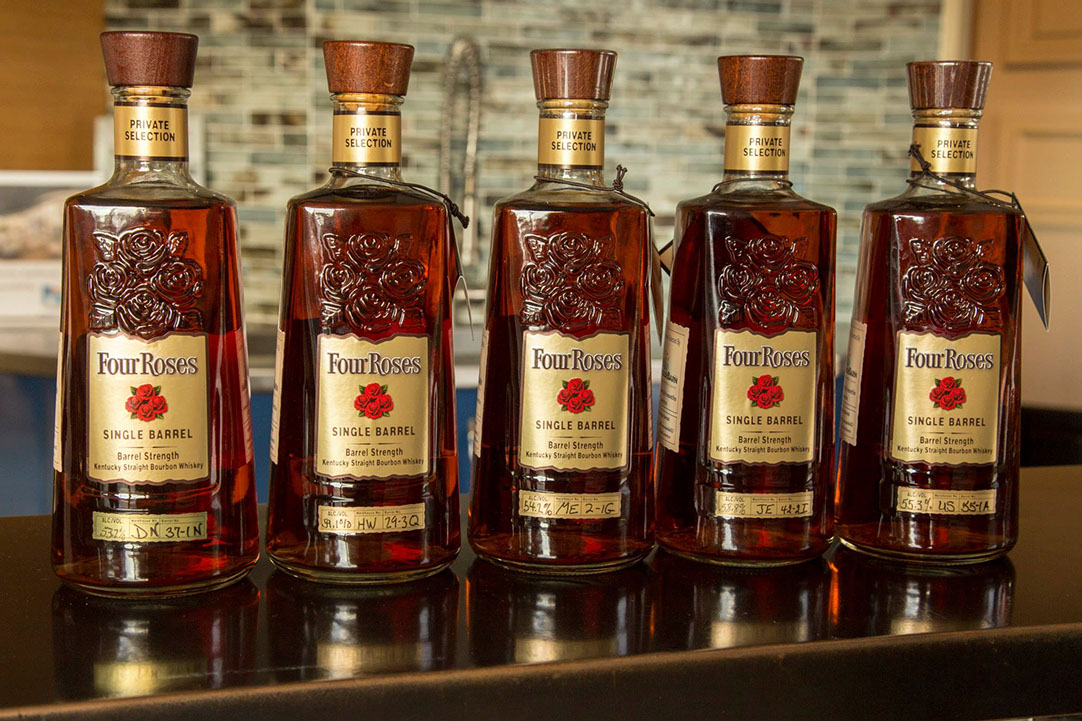
James W. “Jim” Rutledge
Photo of Jim Rutledge, courtesy of Four Roses’ website
Jim Rutledge was born in 1943. He began working for the Seagram’s Company in 1966, first in the R&D department, and by 1975, Rutledge was the head of Industrial Engineering and Budgets. One job led to another and by 1994, Jim Rutledge was named Master Distiller of Four Roses.
Growing up, Rutledge struggled with what he wanted to do. Even as he entered college at the University of Louisville, he was going to major in Mechanical Engineering, but ended up with a degree in Marketing. Once he graduated, he had decided not to just take the first job offer that came to him, but to bide his time and let a good job come to him. So, he continued working at Sears in the credit collections department, where he had been employed all during college.. Eventually, Rutledge received two job offers at the same time: One was working for Philip-Morris, and the other at Seagram’s, in Research and Design; he decided to take the job at Seagram’s.
Over the years at Seagram’s, Jim worked in just about every department from bottling to production management. He was transferred to White Plains, New York, in 1977 and was given only two weeks’ notice. Rutledge later said that if he had been given more time, he probably would have looked for another job.
In 1990. During a performance review, he discovered that Stanley Bershaw, his mentor, was planning on retiring, so he asked to be transferred back to Kentucky. By 1992, Rutledge was working in a Kentucky barrel warehouse. Then in 1994, he was asked to become the Master Distiller at Four Roses.
Four Roses’ Lawrenceburg plant was mainly producing products for the overseas market. Since 1945, the Four Roses on the shelf was considered an “A” blend of all the whiskies. Later, another blend, which was being distilled in Indiana, was not Four Roses; the “B” blend was mainly 60% neutral spirits, and this was what was hurting the Four Roses name. Jim had asked Seagram’s to stop producing the blended product, but they refused. In 2001, the Japanese alcohol conglomerate Kirin bought Seagram’s, and almost overnight, Four Roses ceased to exist.
Jim knew that the distribution of the damaged reputation of Four Roses and just in the United States, was not going to be enough to revive the popularity it once enjoyed. So in 2004, Four Roses Single Barrel was released for the first time. Then, in 2006, Four Roses Small Batch was released to the public. The premium Single Barrel product was the driving force, but the Yellow label was now gaining a following as well.
In order to get the product in consumers’ hands, Jim travelled around the world and spoke with bartenders, visited liquor stores, and held bottle signings for weeks at a time. He was determined to connect with the consumers and attempt to get them to give Four Roses another try. Bourbon insiders largely credit Jim as the lone hand that turned Four Roses around, but he always felt that three things, plus a little luck conspired to make Four Roses what it is today: First, the premium bottle releases; Second, the advent of social media; and Third, education both domestically and internationally regarding whiskey, and specifically, bourbon.
In 2015, Jim retired after 49 years at Four Roses. His decision to retire was based on the feeling that he needed to spend more time with his family, which he knew had suffered from his constant working.
During his time at Four Roses, Jim Rutledge earned numerous awards and recognition. The best of these was in 2001, when Rutledge was inducted into the inaugural class of the Kentucky Bourbon Hall of Fame. In 2007, he was given a “Lifetime Achievement Award” by Malt Advocate Magazine; In 2008, he was named “Whisky Ambassador of the Year” by Whisky Magazine. In 2013, Rutledge became the 13th person inducted into Whisky Magazine’s Global Whisky Hall of Fame. He served on the Kentucky Distillers Associations Board of Directors for 13 years, and was also on the Board of Directors for Kentucky Bourbon Festival for 9 years, and for 7 of those Jim served as the Chairman.
Jim’s retirement would not last long. Within 8 months, he stated, “I realize it is time for me to get back to work,” and with that, he announced that he was starting a new distillery with Stephen Camisa and Jon Mowry, called the J.W. Rutledge Distillery, LLC. The new distillery plans on using two or more yeast strains along with several high-rye bourbon mashbills to produce quality Kentucky Straight Bourbons, Rye Whiskey, and Wheated Whiskey.
Jim Rutledge also serves as Liquid Advisor for Blue Run Spirits. In that capacity, he oversees Blue Run’s Bourbon barrel selections and distills their new-make bourbon, which is currently being produced mostly by Bardstown Bourbon Company.
Contributed By: Stuart McEnerney, Hartford, Connecticut







